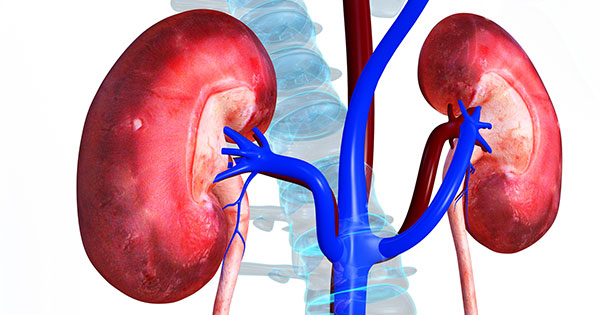The kidneys play an important role in the maintenance of normal body function. The basic function of the kidneys has to do with the formation of urine through complex filtration, reabsorption and secretion mechanisms. In addition, the kidneys also excrete urea and uric acid which are the end products of protein and nucleic acid metabolism.
The kidneys regulate fluid, electrolyte and acid base balance of the body and create a steady environment for the metabolic processes of tissues and cells. This function is essential for life and it is realized by balancing solute and water transport, excreting metabolic waste products, conserving nutrients, and regulating acid-base balance in the body.
Additionally, the kidney also produces three (3) important hormones; erythropoietin which stimulates the production of red blood cells, renin which regulates blood pressure and calcitriol (the active form of vitamin D) which helps in regulation of plasma calcium levels.
Chronic kidney disease (CKD) which has been defined (National Kidney, 2002) as kidney damage with structural or functional abnormalities or a glomerular filtration rate (GFR) <60 ml/min/1.73 m2 for three months or more is now being recognized as a major public health problem, threatening to reach epidemic level (Lysaght, 2002).
An extensive epidemiological research in the adult population is available. In contrast, little is known about the epidemiology of CKD in the pediatric population. There is an increasing percentage of children who develop CKD in their early stage of life (Warady et al; 2005).
As the kidney function in the patient deteriorates, one of the first problems that develop is related to bone disease (Schmitt and Mehls, 2011). The kidney plays a crucial role in activating vitamin D. The liver performs the 25-hydroxylation function, and the kidney performs the 1-alpha hydroxylation step. The 1, 25-dihydroxy vitamin D that is formed is the most active form of vitamin D and will maintain healthy bones and prevent rickets in the growing child. Depending on the stage of kidney disease the 1-alpha-hydroxylase function can begin to deteriorate. The patient can then develop hypocalcaemia because of the decreased absorption of calcium in the gut. This will then lead to secondary hyperparathyroidism which will cause calcium to be mobilized from the bone. Some patients will actually present with pathologic fractures or other forms of bone disease as the presenting feature of chronic kidney disease.
Another area that is affected by chronic kidney disease is the patient’s hemoglobin concentration (Atkinson and Furth, 2011). The deterioration of the kidney function inhibits its ability to secret erythropoietin. In addition, as the patient becomes more uremic, the red cell half-life will decrease and so that turnover of the red cells will become increased.
A number of other electrolyte abnormalities come into play as the patient develops worsening chronic kidney disease. Oftentimes the patient will retain salt and develop hypertension. Potassium is normally secreted by the kidney but will oftentimes become a problem as the patient develops worsening renal function. The kidney is also responsible for maintaining the patient’s acid base status by secreting protons. As the kidney function worsens, the patients often become more and more acidotic. This can lead to a number of problems such as worsening of the bone disease because the acidosis will enhance calcium mobilization from the bones and will worsen the bone disease.
As mentioned above, the retention of salt will cause trouble with hypertension. Also in many disease states, the kidney will be secreting renin that will also exacerbate blood pressure problems.
Patients with chronic kidney disease in general do not grow well (Rees and Mak, 2011). Growth in these patients is a very complex problem involving many aspects of chronic kidney disease. As can be seen above, these patients with CKD have bone disease that will limit their growth potential. The fact that they are at risk for the development of cardiac disease probably also contributes to their growth problems. More importantly, as patients have declining renal function their appetite is suppressed. So many patients do not grow well because of poor nutrition. Other contributing factors include acidosis which impacts bone growth and chronic anaemia, which can impact many factors including cardiac function and appetite.
In the paediatric population, certain renal conditions may increase the risk of progression to CKD; this includes patients presenting with hydronephrosis, congenital malformation of the kidneys, posterior urethral valve, polycystic kidney, proven recurrent UTI, steroid resistance nephrotic syndrome (SRNS) and patients on anti-hypertensives.
Screening of children with the above medical conditions for CKD is therefore necessary to decrease morbidity and mortality.
Writer: BMS Michael Appiah
MLT, BSC, MPHIL.
Email: mikppiah@yahoo.com














